June 2014
Grumman
Avenger
Sherman
Crab Tank
Cromwell
Tank
Landing
Craft Assault LCA
|
June 2014 |
||
![]()
![]() Selected
WW2 70th Anniversaries this month:
Selected
WW2 70th Anniversaries this month:
Between 2009 and 2015, I have set myself a general modelling theme based on selected 70th Anniversaries from WW2.
|
1st June 1944 - A BBC radio news bulletin transmits the first 3 lines of the poem "Chanson d'automne" by Paul Verlaine:
"Les
sanglots longs It is a coded message for the Resistance in occupied Europe, telling them that Operation Overlord, the long awaited invasion of mainland Europe will take place within two weeks. 5 June - At 2315, the BBC transmits the next set of lines: "Blessent mon coeur / d'une langueur / monotone" ("wound my heart with a monotonous languor"), The message tells that the invasion will start within 48 hours. Resistance sabotage operations are to begin immediately, targetting the French railroad system in particular.
6
Jun - D-Day. In one day, Operation Neptune lands 160,000 men of the
Allied Expeditionary
Force in
France over
a 50 mile beach front
in Normandy and by parachute at strategic points inland. Operation
Overlord has begun.
15
Jun - US forces land on Saipan. |
Grumman
TBM-1c Avenger II,
855
Sqn Fleet air Arm, RNAS Donibristle / detached to RAF Hawkinge &
Thorney Island
Operation
Neptune, conducting D-Day anti-submarine and anti shipping sweeps, 6
June 1944.
Academy 1/72 with own decals
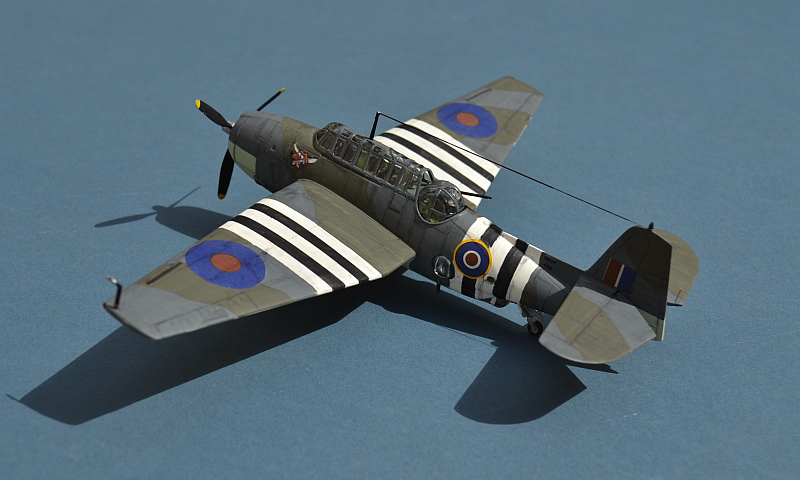
|
Special Order of the Day, 31 May 1944 by Admiral Sir Bertram Ramsay KCB, KBE, MVO, Allied Naval Commander-in-Chief Our task in conjunction with the Merchant Navies of the United Nations, and supported by the Allied Air Forces, is to carry the Allied Expeditionary Force to the Continent, to establish it there in a secure bridgehead and to build it up and maintain it at a rate which will outmatch that of the enemy. Let no one underestimate the magnitude of this task. |
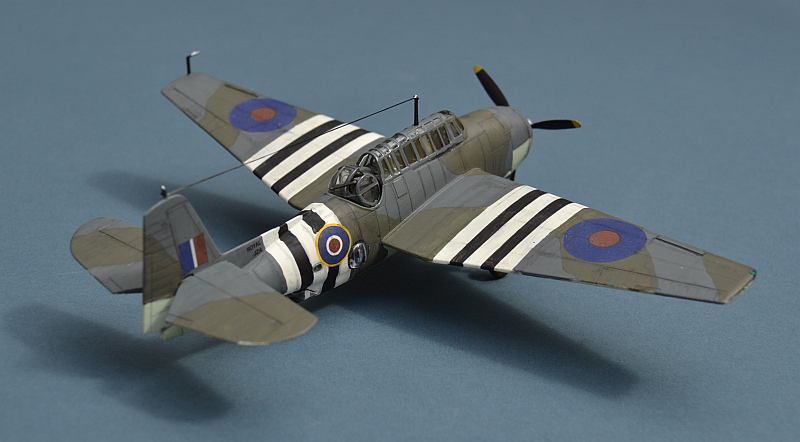
|
The Avenger entered Royal Navy service in January 1943. initially known as the "Tarpon" this name was discontinued in early 1944 and aligned with the US nomenclature instead. Avengers were used extensively in all theatres and although withdrawn at the end of WW2, they returned to FAA service in trhe 1950s as a stop-gap whilst the Fairey Gannet was developed. Bizarrely, on 9 July 1944 a much faster V-1 flying bomb was shot down as it flew past a Royal Navy Avenger. The quick thinking Telegraphist Air Gunner, Leading Airman Fred Shirmer, fired at it from his turret at a range of 700 yards. For this skilled achievement, Shirmer was Mentioned in Dispatches on 31 August 1944 and awarded the DSM on 21 July 1945. In much the same way as the Germans had assessed the Royal Navy to pose the greatest risk to their own planned 940 invasion of Britain (Operation Sealion), D-Day planners were terrified that Nazi ships and submarines might intercept the invasion armada reaching shore and disrupt its resupply, a fear amplified by the experince of the Slapton Sands disaster in May 1944. The solution was the same approach that the Germans had tried in 1940 and failed - the acheivement of total air dominance over the landing areas. To this end in the lead up to D-Day, Fleet Air Arm Avenger squadrons were combined under the control of RAF Coastal Command and deployed to south-coast bases to conduct intensive anti submarine and anti shipping strikes along the channel and above the landing beaches. |
|
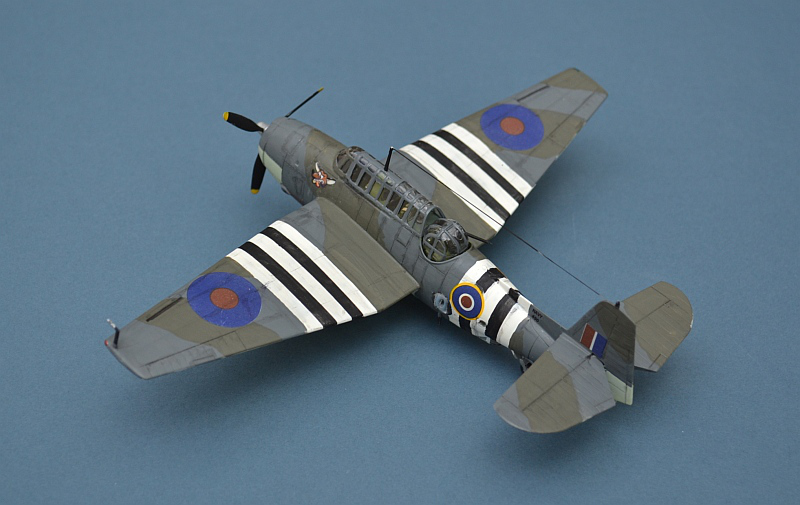
Academy's Avenger kit is recommended, as an easy built with superb fit and nicely judged engraved detail. It is clearly based on the old FROG Avenger, which is no bad thing. Indeed,although the sprue layout is a little different, the parts are largely interchangeable, with only the very slightly more detailed cockpit and engraved detail discriminating between the two; the Academy kit even has an old FROG-style stand! Better still, FROG intended their kit as a British Avenger II from the start, so the Academy kit comes with the domed fuselage windows of the British variant.
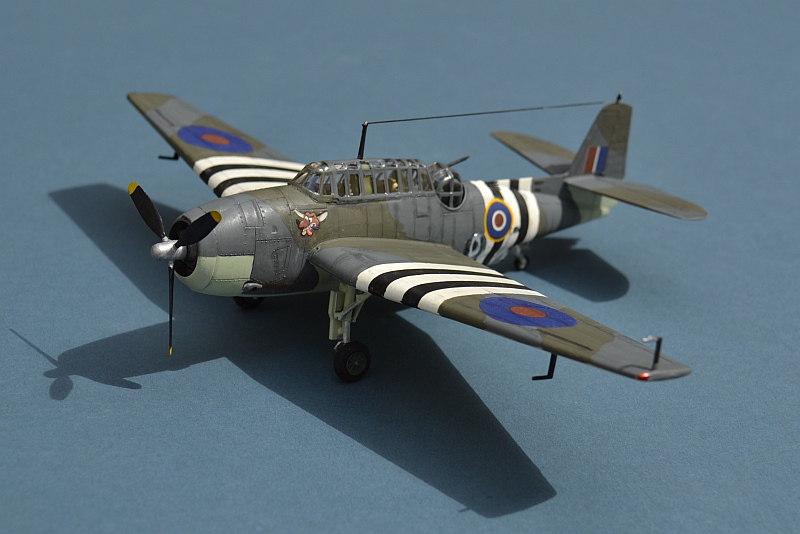
The only changes I have made are to add some seatbelts, a plastic card instrument panel, radar display and cockpit coaming, plus the wire antenna. The decals are FROG original roundels and fin flashes, plus some home-made serials and the "Wile-e-coyote" motif (scanned from an image on the web, then inkjet printed). The invasion stripes are painted on, using some Scotch invisible tape to mask the lines. No filler was needed, although the engine cowling wasn' the best of fits and needed a little more sanding down than I would have liked.
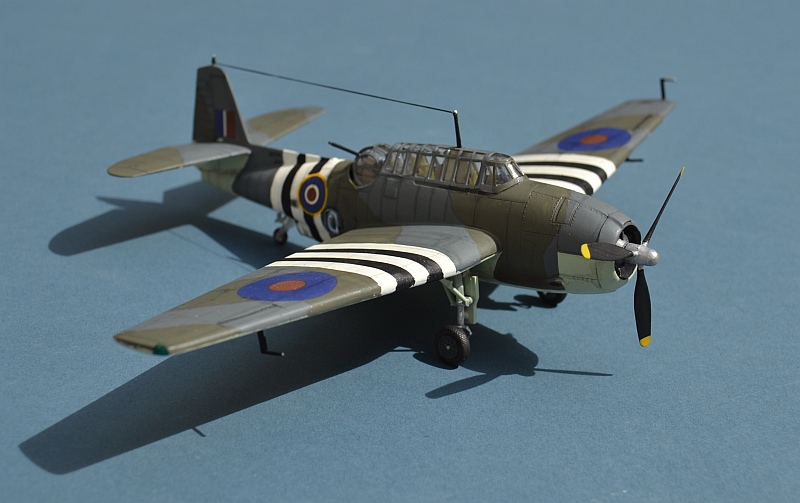
Have a look at my "RN Props" pages for details of my other WW2 Naval aircraft models
Landing
Craft Assault LCA
Landing
47 (Royal Marine) Commando, 4th Special Service Brigade
Gold
Beach
Operation
Neptune, Normandy, 6 June 1944.
Armageddon 1/72
The LCA Landing Craft entered British service in 1939 and was extensively used during the early war operations, including Commando raids in Norway and the ill-fated Dieppe landings. Originating in a Thorneycroft design, it was built by boatbuilding firms all around the UK, with more than 2,000 completed. With its low sillouette, twin engines and propellors, shallow draft, very quiet engines and armour plating it was ideally suited to Special Ops. Several LCA design features were adopted by the US as part of the much cheaper single engined Higgins Boat LCVP design, however the added complexity and cost of the LCA over the LCVP, plus concerns about the smaller ramp meant that the US did not build their own LCAs.
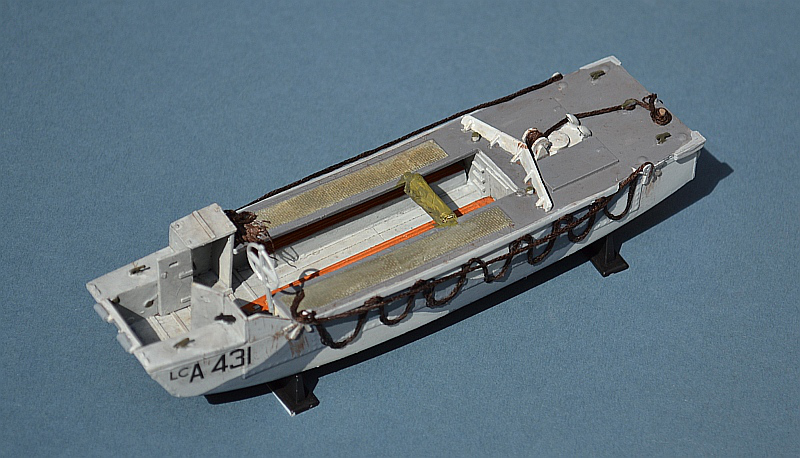
On D-Day, LCAs were used to land troops on Juno Beach, Gold Beach, and Sword Beach. ROyal Navy manned LCAs also landed the US infantry formations on either flank of Omaha Beach and the Rangers who assaulted Pointe du Hoc. The westernmost landings on Utah Beach and the pre-dawn landing on Îles Saint-Marcouf were also conducted from LCAs.
After WW2, LCAs saw service at Suez, in Vietnam with the French and finally with the Royal Marines in Aden in 1967.
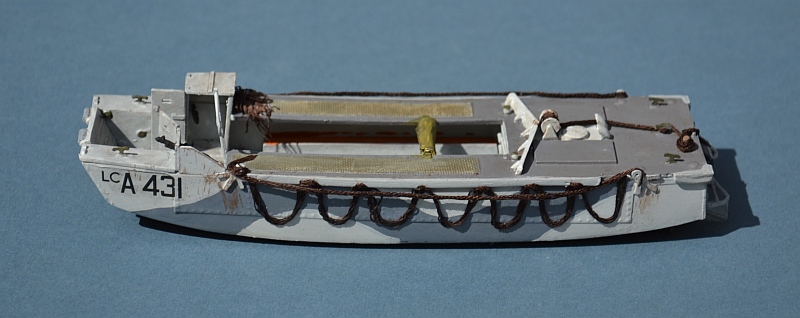
47
Cdo landed on Gold Beach at 09:50 hours on the 6 June. Five of the
LCAs were sunk by mines and beach obstacles with the loss of 76 of
the 420 men in the Commando. These losses delayed their advance to
the primary objective the port of Port-en-Bessin. Leaving the beaches
after noon they fought through La Rosiere and dug in around Escures
for the night prior to their planned assault on Port-en-Bessin on the
7 June.
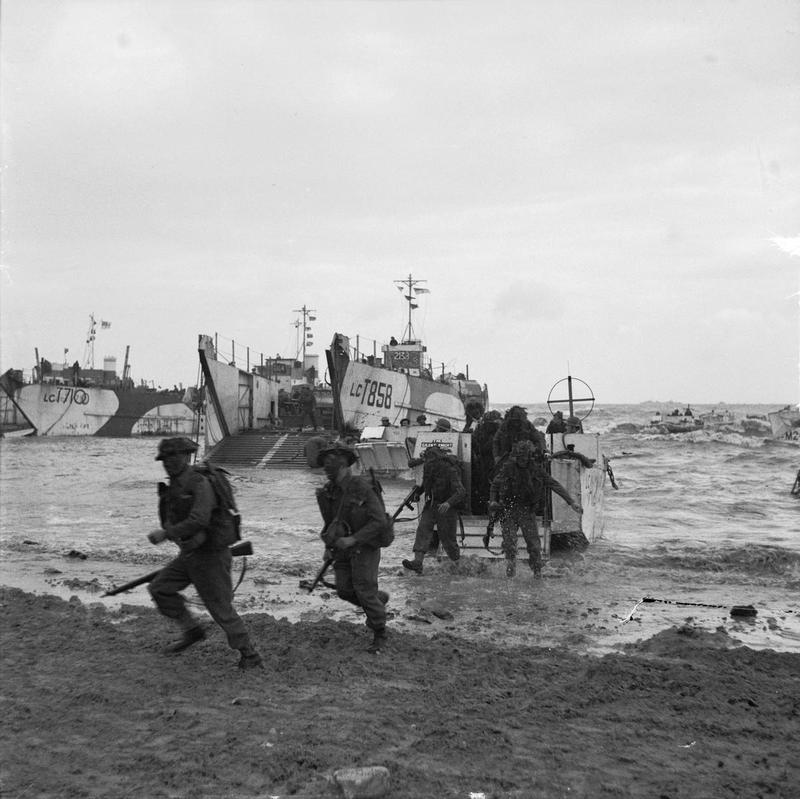
47 Cdo RM landing on 6th June from LCA 431 © IWM B5245
Operation Aubery, the early capture of Port-en-Bessin was essential to enable it to become the main port for fuel deliveries to Normandy until Cherbourg had been liberated.
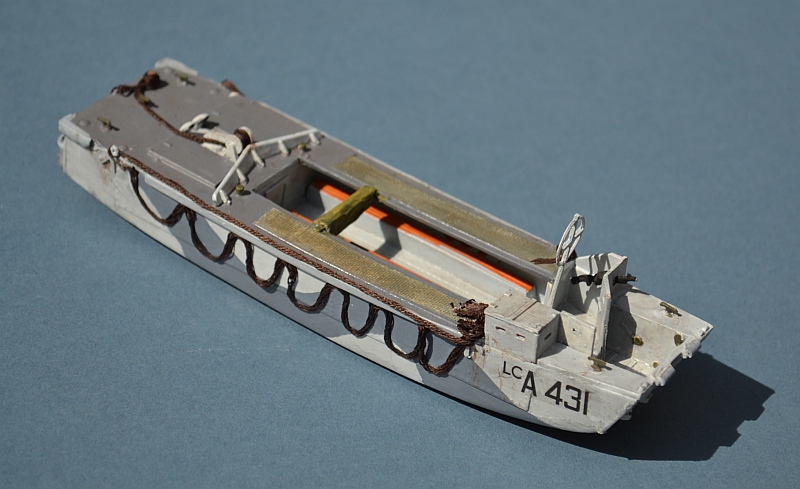
Most available landing craft kits seem to focus on the ubiquitous US LCVP and LCM3 designs used by US troops. However the more sophisticated British LCA was used Britsh and Commonwealth troops on D-Day and made up a greater part of the initial landing force. Kits are hard to come by though and this Armageddon branded kit by the French firm Mach2 is not cheap. As with all Mach2 kits it is a short run mould which requires a lot of tidying up to complete, but builds into a nice example of this very important vessel type.
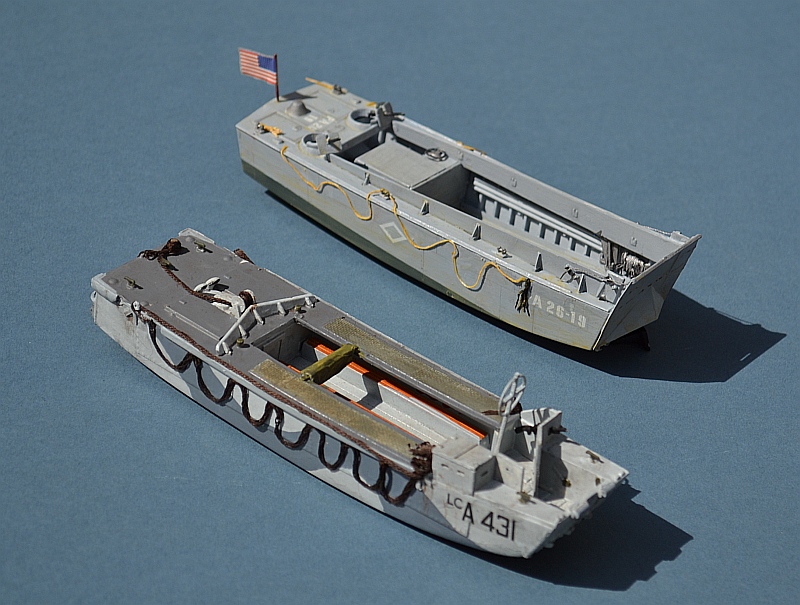
The LCA sitting alongside my Airfix LCVP
Sherman
"Crab" Tank
1st
Lothians and Borders Yeomanry, 30th Armoured Brigade,
79th
Armoured Division "Hobarts Funnies"
Operation
Neptune, Normandy, 6 June 1944.
Airfix 1/76
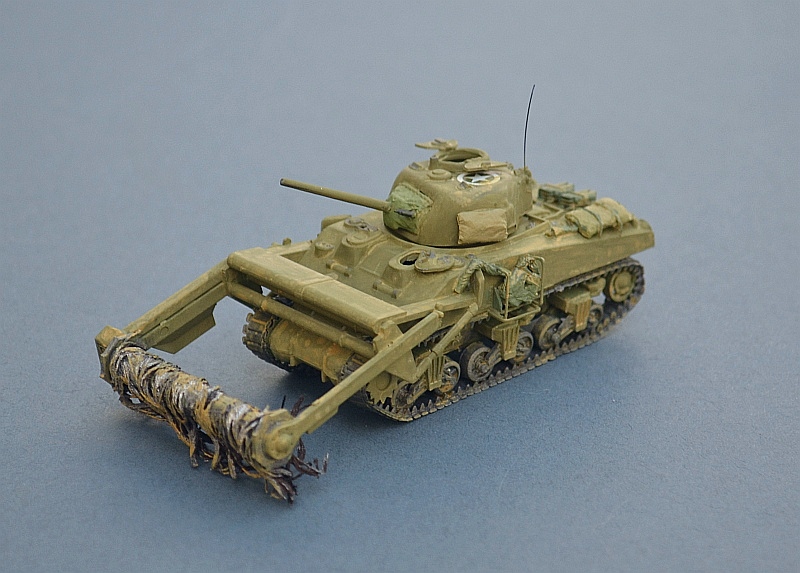
The US made Sherman tank made up in numbers for its technical shortfalls.
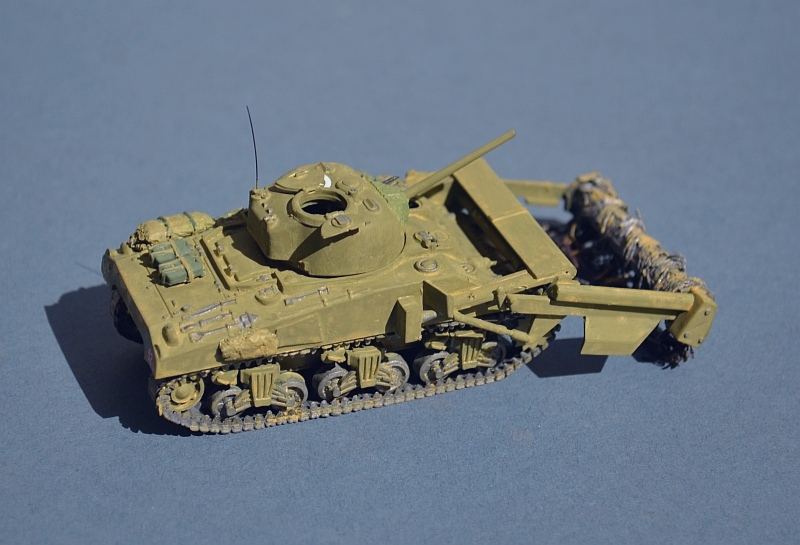
The old Airfix Sherman kit builds up very nicely even if its exact variant is rather unclear. More recently it has been released wih a number of nice add-on parts to make either a rocket armed verion or a mine-clearing flail tank. This is the latter, perhaps not the most accurate representatoon, but with a few add-ons it builds up into a nice little model.
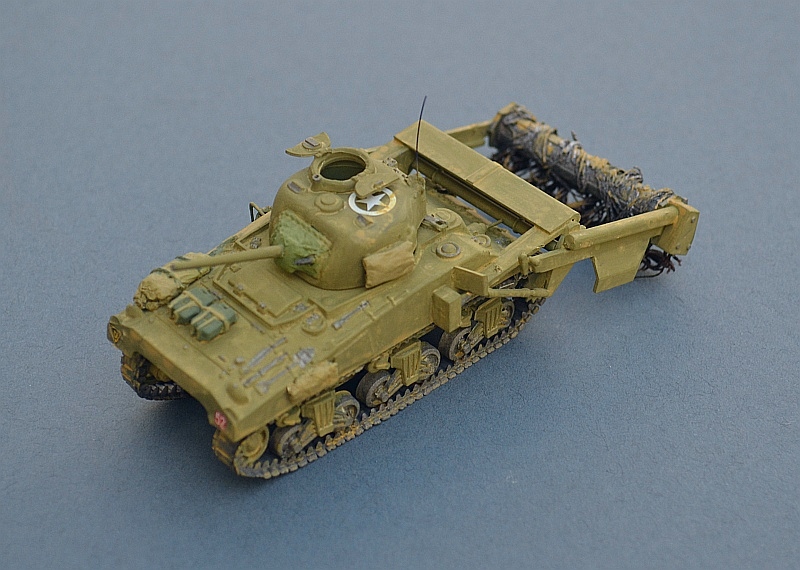
I have added a few accessories to busy it up a bit - a metal foil cover for the gun mantlet, spare chain stowages and hull tarpaulins, plus some extra jerry cans on the after deck. I also replaced the rather rigid looking plastic flails with some thick thread replacements and changed the Arm of Service marking to represent the 1st Lothians. Airfix supply some rather plain decals that may be OK for D-Day, but soon after, most of these tanks saw names and numbers applied to the hull and turret which would add a bit of interest.
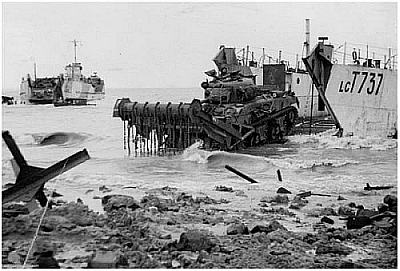
A Crab of the Lothians & Borders Yeomanry comes ashore on D-Day
Have a look at my "Dark Side" pages for my other AFVs models
Cromwell
Mk IV Tank
5
Royal Tank Regiment, 7th Armoured Division, Allied Expeditionary Force
Operation
Neptune, Normandy 6 June 1944.
Armourfast 1/72
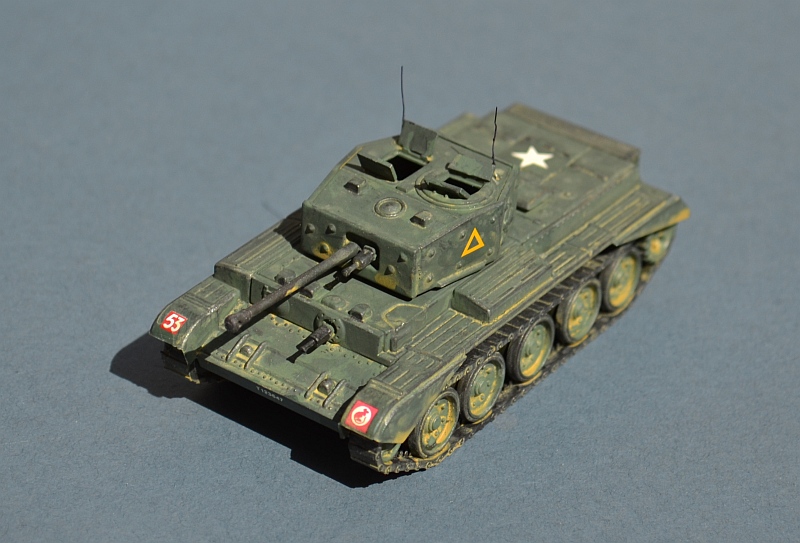
The Cromwell tank was one of the most successful British designs of WW2. Although still not the most reliable of designs, its good armament, fast speed and low profile in comparison with the Sherman made it popular with crews. Mixed units of Shermans and Cromwells formed much of the armour landed in Normandy on D-Day along ewith the heavier Churchill infantry tank.
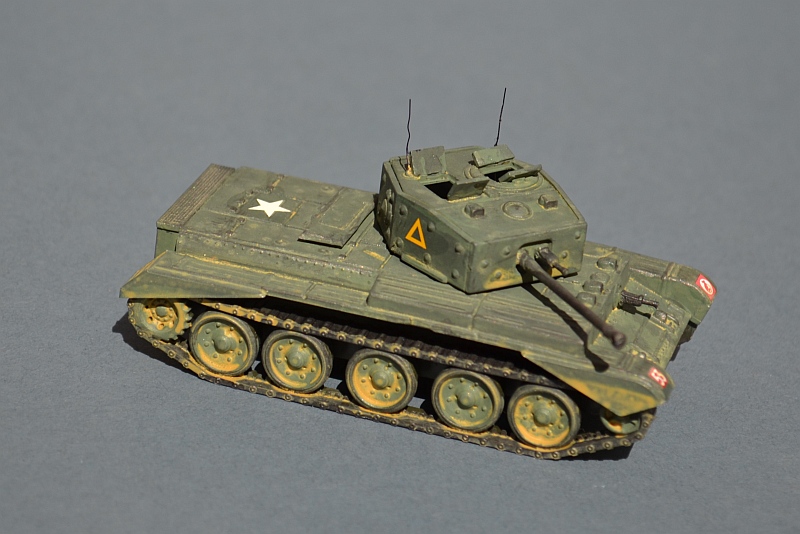
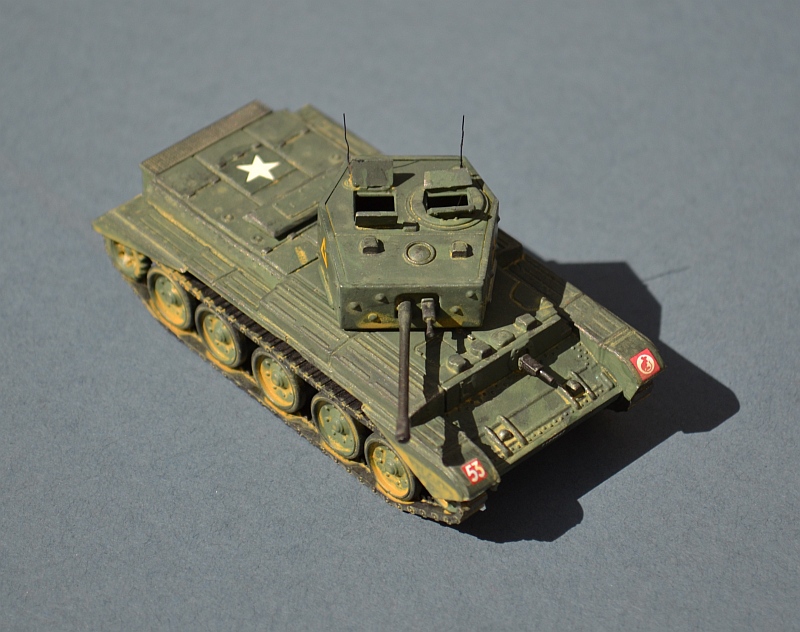
This is the second of my quick-build Armourfast Cromwells, the other having changed into a Royal Marines Centaur some years ago!
Other D-Day models on my website:

Higgins Boat Landing Craft - US Navy/Coastguard
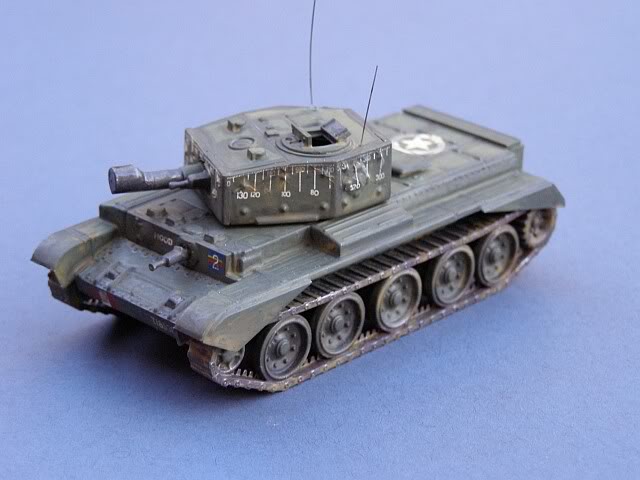
Royal Marines Centaur Support Tank
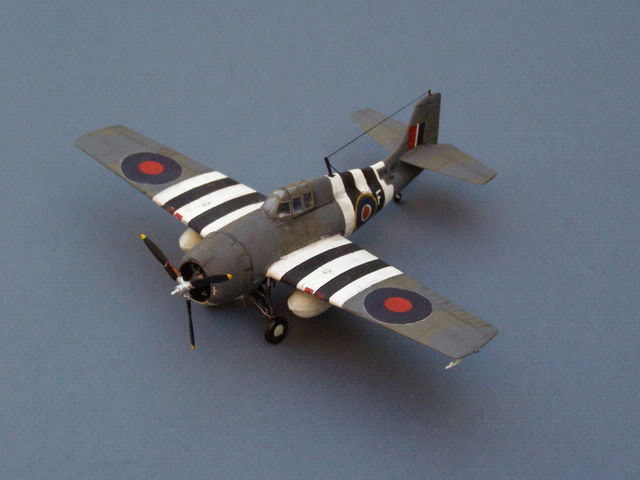
Grumman Wildcat

Bristol Beaufighter
Link to previous month Link to Next Month
www.gengriz.co.uk
Background Image: This restored Grumman Avenger in D-Day markings is a regular performer at airshows.